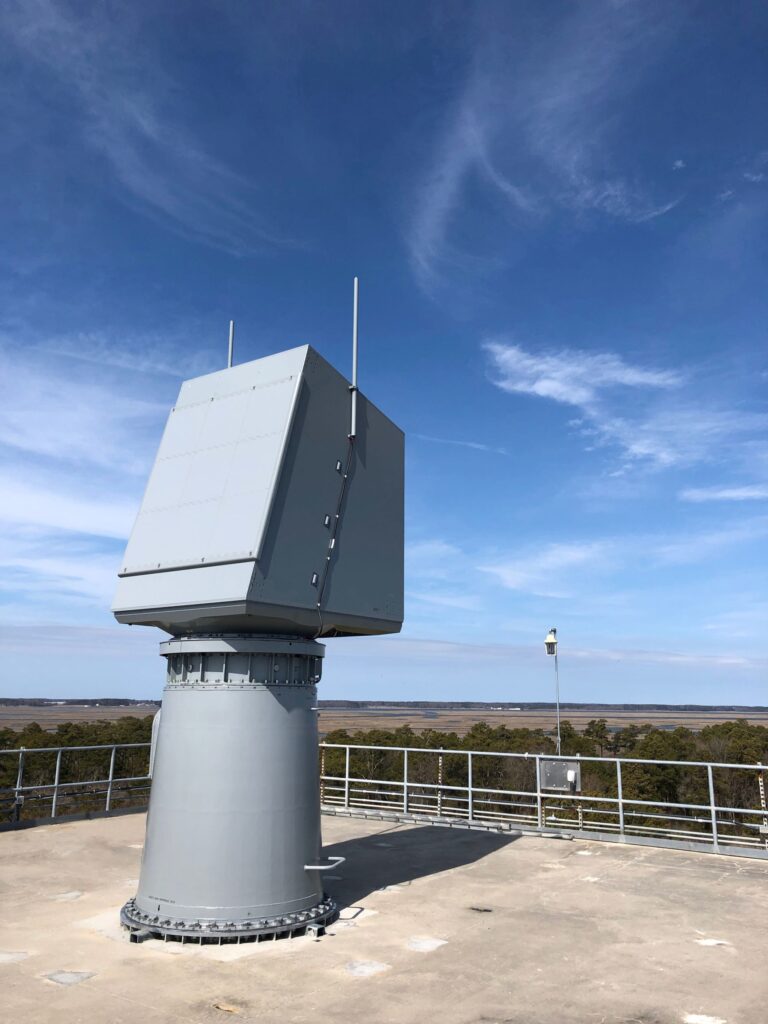
A SPY-6 radar while undergoing testing at Wallops Island in Virginia. (Raytheon)
WASHINGTON: Two variants of the SPY-6 radars have completed a series of tests at the Navy’s Wallops Island test facility in Virginia, which prime contractor Raytheon says was necessary to keep the program’s development on track.
The testing, which occurred earlier this year, was focused on demonstrating new functionalities for both variants and will allow testing to advance to multi-functional operations and combat management system integration.
As one of the Navy’s premier air and missile defense capabilities, the development of the radars will be critical for not only traditional warships, but potentially unmanned vessels as well
Development on the Enterprise Air Surveillance Radar “is progressing rapidly, because our engineers are applying knowledge they’ve gained from the SPY-6 family,” Kim Ernzen, vice president of Naval Power at Raytheon Missiles & Defense, said in a July 30 company statement. “SPY-6’s common architecture saves time, money and streamlines training and logistics across software and hardware systems.”
Capt. Jason Hall, the above-water sensors program manager at the Navy’s Program Executive Office for Integrated Warfare Systems, added that the “teams continue to improve and enhance the system, and will integrate the radar with the combat management system using land-based testing.”
The two variants tested at Wallops include the SPY-6(V)2, a rotating array designed for amphibious assault ships and Nimitz-class carriers focused on defending against cruise missiles, anti-surface and anti-ship threats, as well as jamming and electronic warfare. The other variant tested was the SPY-6(V)3, a fixed-face array planned for the Constellation-class frigate and Gerald Ford-class aircraft carriers.
The Navy in July 2020 awarded Raytheon a $126 million contract to produce four (V)2 radars and two (V)3 radars. The service, through statements to the press and testimony to Congress, has revealed it is considering assigning the BMD mission to vessels such as the Large Unmanned Surface Vehicle.
Scott Spence, who leads Raytheon’s naval radar directorate, told Breaking Defense in a July interview that the company anticipates receiving a hardware, production and sustainment contract this fall that will cover the backfitting required to install the fourth SPY-6 variant onto the Navy’s Flight IIA destroyers.
The radar’s development could become key for unmanned ships as well which Navy officials have said could one day be assigned the ballistic missile defense mission.
The purpose, according to written testimony from former Navy secretary Kenneth Braithwaite, would be to free up availability for traditional AEGIS BMD ships. However, analysts question how plausible equipping an LUSV with a SPY-6 radar is due to the increased costs that would stem from requirements for a larger hull form and increased power generation.






















